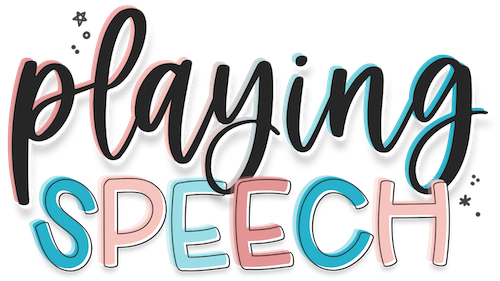How to choose treatment targets for speech therapy activities: 2 types of words you need to consider!
Target Selection in Speech Therapy
Target selection for speech sound disorders is super important. The right targets can make or break your speech therapy sessions. Choose the right targets, and you have happy clients making quick progress in speech therapy. Choose the wrong targets and both the SLP and the child can become frustrated and overwhelmed.
I like to think of target selection broadly in two ways. First, I want to start off with words that will help establish a sound production. Then I want to use words that will help generalize and carryover the speech sounds we have learned in highly facilitative contexts.
Words to Help Establish Speech Sound Production
So here’s the thing. In the beginning I carefully choose words that will help facilitate and establish speech sound productions. I want them to be “easy” for kids to produce - think of a lob in softball if you will 🤣. I consider the vowels in the word. I consider the other consonants in the word. I also consider where the target sound is PLACED in the word.
This does not mean that the sound itself is considered an easy sound. You can use complex sounds (think CH or consonant clusters). But the rest of the word surrounding your target sound or cluster is “easy” for the child to produce. No oral gymnastics needed to say the rest of the word. So for example, if I was working on CH, I might start with the word “chew” because its a CV syllable shape with a rounded vowel that will fascinate the production of the CH. I would not start with the word “checkers” or “chicken”!
Sometimes it is easier if the target sound is at the END of the word. I do this often when working on the final /k/ sound in speech therapy. I like to start with the word “back” because the open vowel can be prolonged, keeps the tongue away from the alveolar ridge, and gives the child time to get to that final /k/ position.
Words to Help Generalize Speech Sound Production
After a child is becoming more automatic with the target sound in the “easy” words, I then like to use more “difficult” words that will help tax that motor plan and lead to generalization and carryover. These more difficult words may contain the errored sound more than once. They may contain other consonants with very opposite places of articulation from your target. They may contain more complex vowels. You can also increase the number of syllables in the target word. For for two and three syllable words!
Some Things to Consider…
The words you choose at each stage may differ child to child. What is easy for one, may be harder for another. And another caveat: target selection for apraxia is going to be very different from target selection for artic or phono. But I follow the same principles - “easy” words then “hard” words. So what about you? Are you doing this too? Do you really think about target selection?
Help Me with Target Selection, Please!
I have done the work for you!! I am super picky about the words I use in my therapy sessions! And if you have any of my more recent TPT resources, you can see my focus on target selection is 🙌🏻. Most of my resources are made with the establishment phase in mind, because I feel like there are not a lot of resources out there that give you easy facilitative contexts to start your speech therapy activities! I am going to link some of those resources here if you want to grab some speech therapy materials where you KNOW you have great targets to start your speech sound disorder therapy!
So that’s all for now! Send me a message if you have any questions or any specific requests for resources! I love chatting SSD!



